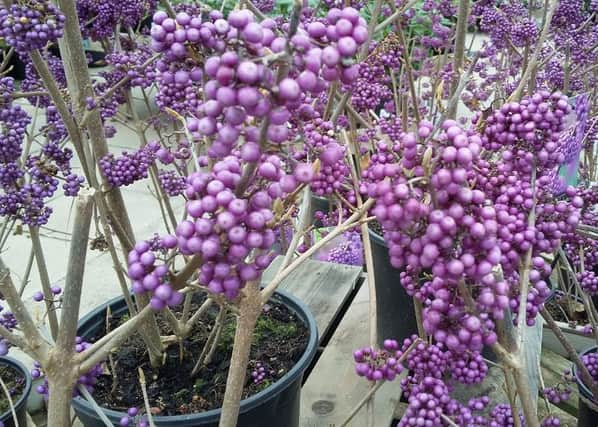There's lots to consider when planting trees


It is co-ordinated by the Tree Council, whose members include local authorities and community groups. It has 8,000 tree wardens working with schools and volunteer organisations, encouraging people to plant circa a million trees.
Search online for Tree Planting Week to find out more about events beginning on November 26. Try www.treecouncil.org.uk/Take-Part
There are several things to consider when planting a tree.
If it’s beyond your garden, do you have permission?
Advertisement
Hide AdAdvertisement
Hide AdFor trees on your own plot, have you considered how tall they will become? How much shade will the canopy create? And how far will the roots travel? The root system will cover at least as much ground out of sight as the top growth. This is important where main drains or other services exist, not to mention house foundations.
Examples abound of trees planted far too close to buildings.
The classic is the monkey puzzle tree or Chilean pine (Araucaria araucana). It starts at a slow growing pace, a mere 2m in 10 years, which makes it acceptable in a small garden, but then it takes off and can reach 20m.
More acceptable is the silver birch (Betula pendula), planted 6m from this house decades ago by a previous owner. One source is cautious in suggesting 10m distance, whilst another insists 4m is sufficient. The tree is a year-round haven for birdlife so we monitor its growth. It could have reached 10m, but is pruned every few years.
Advertisement
Hide AdAdvertisement
Hide AdThe mountain ash (sorbus) has gorgeous cultivars and is a popular ornamental choice. It is best planted 7m from the nearest structure. Flowering cherries (prunus) remain safe at 5m. Alternatively, if you’ve managed to raise oak, beech, ash or elm from seed, make sure they’re at least 15 large paces from the house.
Planting is the key to success. Make the hole bigger than required to accommodate organic material and spent potting compost with slow release fertiliser added. Drive a wooden support in first, if required, then add the ingredients and water well. When planting a pot-grown specimen, make sure the roots are teased apart.
Any bare-rooted specimens arriving by post benefit from standing in a bucket of water some hours before planting. Check roses especially as the roots can dry out in transit. Remove any damaged roots at a suitable point with secateurs, and when a tree or shrub has been safely planted, firm it in with heel and toe.